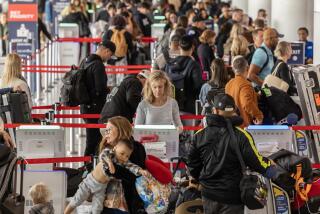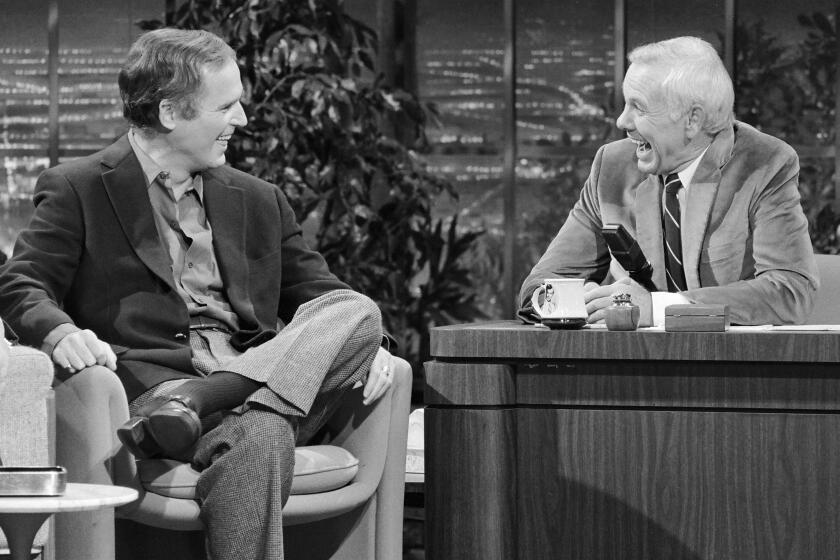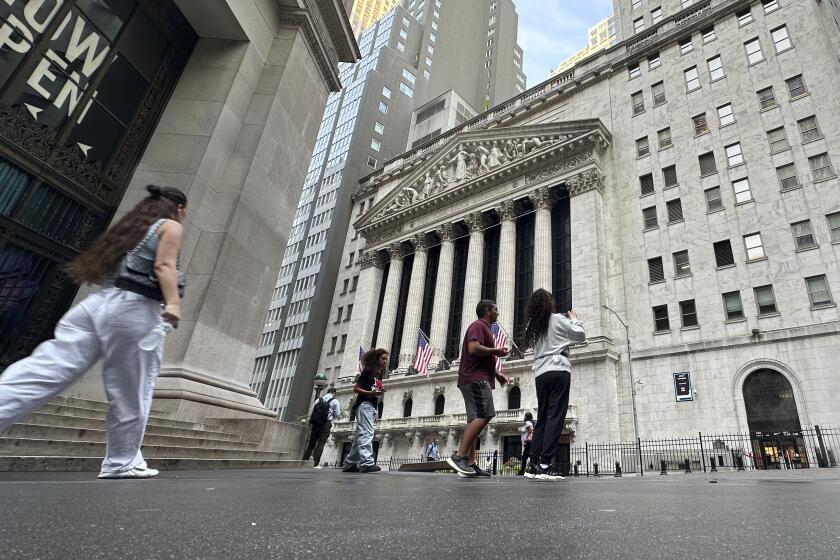U.S. inflation slows to 6.4%, but price pressures re-emerge

The pace of consumer price increases eased again in January, the latest sign that the high inflation that has gripped Americans for two years is slowing.
At the same time, Tuesday’s consumer price report from the government showed that inflationary pressures in the U.S. economy remain stubborn and are likely to keep inflation high well into this year.
The government said Tuesday that consumer prices rose 6.4% in January compared with 12 months earlier, down from 6.5% in December. It was the seventh straight year-over-year slowdown and well below a recent peak of 9.1% in June. Yet it remains far above the Federal Reserve’s 2% annual inflation target.
And on a monthly basis, consumer prices increased 0.5% from December to January, much higher than the 0.1% rise from November to December. More expensive gas, food and clothing drove up inflation in January.
The Fed has aggressively raised its benchmark interest rate in the past year to its highest level in 15 years in its drive to get rampaging inflation under control. The Fed’s goal is to slow borrowing and spending, cool the pace of hiring and relieve the pressure many businesses feel to raise wages to find or keep workers. Businesses typically pass their higher labor costs on to their customers in the form of higher prices, thereby helping fuel inflation.
So far, most of the slowdown in inflation reflects freer-flowing supply chains and sinking gas prices. But the Fed’s rate hikes — eight since March of last year — have had no discernible effect on America’s job market, which remains exceptionally strong.
THIS IS A BREAKING NEWS UPDATE. AP’s earlier story follows below.
WASHINGTON (AP) — U.S. inflation likely slowed again last month in the latest sign that consumer price increases are becoming less of a burden on America’s households. But Tuesday’s report from the government may also suggest that further progress in taming inflation could be slow and “bumpy,” as Federal Reserve Chair Jerome Powell has described it.
Consumer prices are expected to have risen 6.2% in January from 12 months earlier, down from a 6.5% year-over-year surge in December. It would amount to the seventh straight slowdown.
On a monthly basis, though, inflation is expected to have jumped 0.5% from December to January, according to a survey of economists by the data provider FactSet. That would be much faster than the 0.1% uptick from November to December.
So-called core prices, which exclude volatile food and energy costs to provide a clearer view of underlying inflation, are also expected to have slowed on a 12-month basis. They are forecast to have increased 5.5% in January from a year earlier, down from a 5.7% year-over-year rise in December.
But for January alone, economists estimate that core prices jumped 0.4% for a second straight month — roughly equivalent to a 5% annual pace, far above the Fed’s target of 2%.
“The process of getting inflation down has begun,” Powell said in remarks last week. But “this process is likely to take quite a bit of time. It’s not going to be, we don’t think, smooth, it’s probably going to be bumpy.”
Average gasoline prices, which had declined in five of the past six months through December, likely rose about 3.5% in January, according to an estimate from Nationwide. Food prices are also expected to have risen, though more slowly than the huge spikes of last summer and fall.
On a brighter note, clothing and airfare costs are thought to have barely budged from December to January. And economists have estimated that hotel room prices fell sharply.
Overall, the government’s inflation report will likely show the continuation of a pattern that has emerged in recent months: The costs of goods — ranging from furniture and clothing to toys and sporting goods — are falling. But the prices of services — restaurant meals, entertainment events, dental care and the like — are rising faster than they did before the pandemic struck and threaten to keep inflation elevated.
Goods have become less expensive because supply chain snarls that had inflated prices after the pandemic erupted in 2020 have unraveled. And Americans are shifting much of their spending toward services, after having splurged on items like furniture and exercise equipment during the pandemic.
Yet average wages are rising at a brisk pace of about 5% from a year ago. Those pay gains, spread across the economy, are likely inflating prices in labor-intensive services. Powell has often pointed to robust wage increases as a factor that’s driving up services prices and keeping inflation high even as other categories, like rent, are likely to decelerate in price.
The Biden White House last week calculated a measure of wages in service industries excluding housing — the sector of the economy that Powell and the Fed are most closely tracking. The administration’s Council of Economic Advisers concluded that wages in those industries for workers, excluding managers, soared 8% last January from a year earlier but have since slowed to about a 5% annual pace.
That suggests that services inflation could soon slow, especially if the trend continued. Still, wage gains of that level are still too high for the Fed’s liking. The central bank’s officials would prefer to see wage growth of about 3.5%, which they see as consistent with their 2% inflation target.
A key question for the economy this year is whether unemployment would have to rise significantly to achieve that slowdown in wage growth. Powell and other Fed officials have said that curbing high inflation would require some “pain” for workers. Higher unemployment typically reduces pressure on businesses to pay bigger wages and salaries.
Yet for now, the job market remains historically very strong. Earlier this month, the government reported that employers added 517,000 jobs in January — nearly twice December’s gain. The unemployment rate dropped to 3.4%, the lowest level since 1969. Job openings remain high.
Powell said last week that the jobs data was “certainly stronger than anyone I know expected,” and suggested that if such healthy readings were to continue, more rate hikes than are now expected could be necessary.
Other Fed officials, speaking last week, stressed their belief that more interest rate increases are on the way. The Fed foresees two more quarter-point rate hikes, at its March and May meetings. Those increases would raise its benchmark rate to a range of 5% to 5.25%, the highest level in 15 years.
The Fed lifted its key rate by a quarter-point when it last met on Feb. 1, after carrying out a half-point hike in December and four three-quarter-point increases before that.
The financial markets envision two more rate increases this year and don’t expect the Fed to reverse course and cut rates until sometime in 2024. For now, those expectations have ended a standoff between the Fed and Wall Street investors, who had previously been betting that the Fed would be forced to cut rates in 2023 as inflation fell faster than expected and the economy weakened.
More to Read
Inside the business of entertainment
The Wide Shot brings you news, analysis and insights on everything from streaming wars to production — and what it all means for the future.
You may occasionally receive promotional content from the Los Angeles Times.






